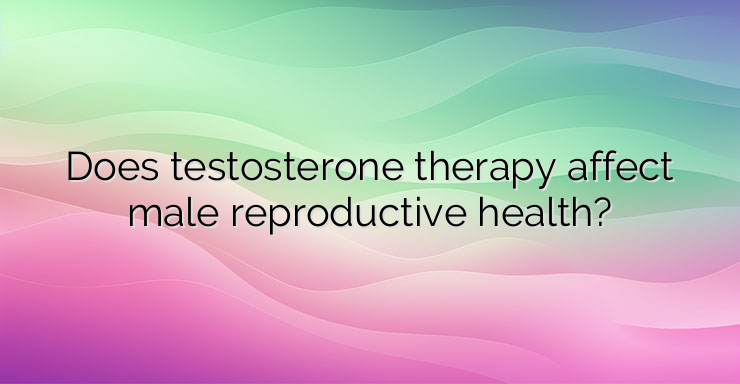The use of testosterone replacement therapy and the use of anabolic-androgenic steroids is increasingly common in young men. These two therapeutic approaches can suppress the function of the hypothalamic-pituitary-gonadal axis, leading to a decrease in spermatogenesis. Discontinuation of this therapy may result in spontaneous resumption of normal spermatogenesis given sufficient recovery time. However, in some patients, normal spermatogenesis is not restored or a longer period of time is required for recovery before effective fertilizing ability of spermatozoa is restored. The natural decline of serum testosterone levels and the treatment of hypogonadism require the introduction of testosterone replacement therapy. Anabolic-androgenic steroids are also among the commonly used agents for various reasons in men of various age groups. This, however, leads to hypogonadism. The use of both testosterone replacement therapy and anabolic-androgenic steroids can lead to suppression of the hypothalamic-pituitary-gonadal axis, leading to impaired spermatogenesis and potential infertility. Spontaneous recovery of spermatogenesis after discontinuation is possible, but may take from several months to several years, and in some cases may remain permanently impaired. The use of exogenous androgens may affect the hypothalamic-pituitary-gonadal axis through similar mechanisms as endogenous testosterone by exerting a dose- and duration-dependent negative feedback loop, resulting in decreased intratesticular testosterone, decreased FSH production, and disruption of spermatogenesis. Studies suggest that longer exposure to exogenous testosterone and older age are factors that require a longer recovery time after discontinuation of treatment. Anabolic-androgenic steroids are synthetic derivatives of testosterone with chemical modifications that mimic the anabolic rather than androgenic effects of testosterone. Abuse of these therapeutic agents is often observed, and special regimens with different doses are prescribed to maximize muscle gain and weight gain. Cyclic routes of administration are often used to avoid side effects- Nevertheless, anabolic-androgenic steroids can bind to the androgen receptor in target cells and exert the same negative effects as endogenous testosterone, often causing hypogonadism and associated decreases in serum gonadotropin and intratesticular testosterone levels.Abnormally low serum concentrations of intratesticular testosterone and follicle-stimulating hormone in these patients result in azoospermia or oligospermia with reduced motility and/or abnormal sperm morphology. Such effects on the hypothalamic-pituitary-gonadal axis are potentially reversible with discontinuation of anabolic-androgenic steroids, but the time to recovery is highly variable and is influenced by the dose and degree of accumulation of multiple anabolic-androgenic agents, the duration of use, and the age of the patient. Studies suggest that recovery of spermatogenesis is possible within 4-12 months, although in some patients it may take 24-30 months to restore the optimal sperm concentration in the seminal fluid. References: https://www.ncbi.nlm.nih.gov/pmc/articles/PMC4854084/


Leave a Reply